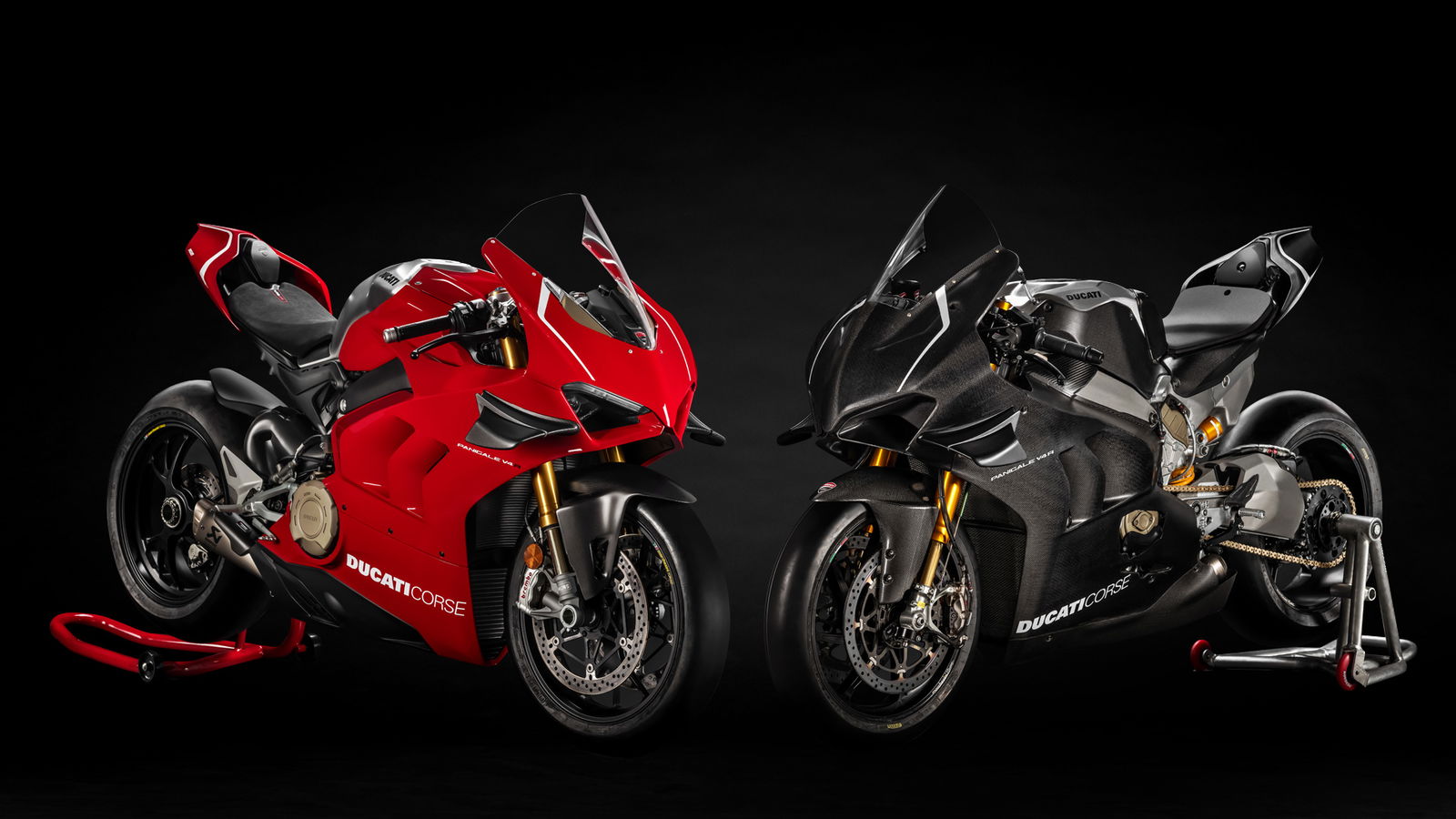R1 2020 review
The Yamaha R1 2020 gets a revised fairing, upgraded engine internals and a total of seven electronic rider aids. We went to Jerez to check it out.

SINCE its inception in 1998, the R1 has been one of the most popular, fastest and best-selling sportsbikes on the planet. With its World Superbike DNA and a steady drip down of tech from MotoGP, the Yamaha R1 2020 about as technologically advanced as anything else currently available.
Yamaha have taken an evolution not revolution approach to the 2020 YZF-R1 and R1M, claiming that both bikes are more rideable and refined than the previous editions, all while being Euro5 compliant. Here’s how they’ve done it.

Yamaha R1 2020 price and colours
The base model YZF-R1 comes in at £16,799 and is available in Icon Blue – as shown – and Midnight Black. New styling tweaks for this year are the matt-finished grey front mudguard, tail unit flanks and the revised front fairing that’s claimed to give 5% better aero efficiency – new fairing fitted to both models.

The YZF-R1M is priced at £21,199 and is only available in the Icon Performance colour scheme. The 2020 machine gets a full carbon tail unit and is easy to spot on the road thanks to the large, race-style silver number-board adorning the nose cone.
PCP and finance options are TBC and both bikes should be in UK dealers by the second week of October 2019.

Yamaha R1 2020 engine
Both machines become the first in the Yamaha range to meet the latest Euro5 regulations. Helping to achieve this, Yamaha’s engineers have increased combustion efficiency by moving the injectors to squirt directly down the intake – as opposed to across it – and relocating the throttle valves nearer to the combustion chamber. The new engine is also blessed with revised finger followers, a new oil delivery system, revised exhaust ports and a final drive new chain.
The new 10-hole injectors, 21.5° spray angle, and relocated throttle valves have reduced intake volume by 12% for improved combustion stability, which should help to create a more efficient engine.
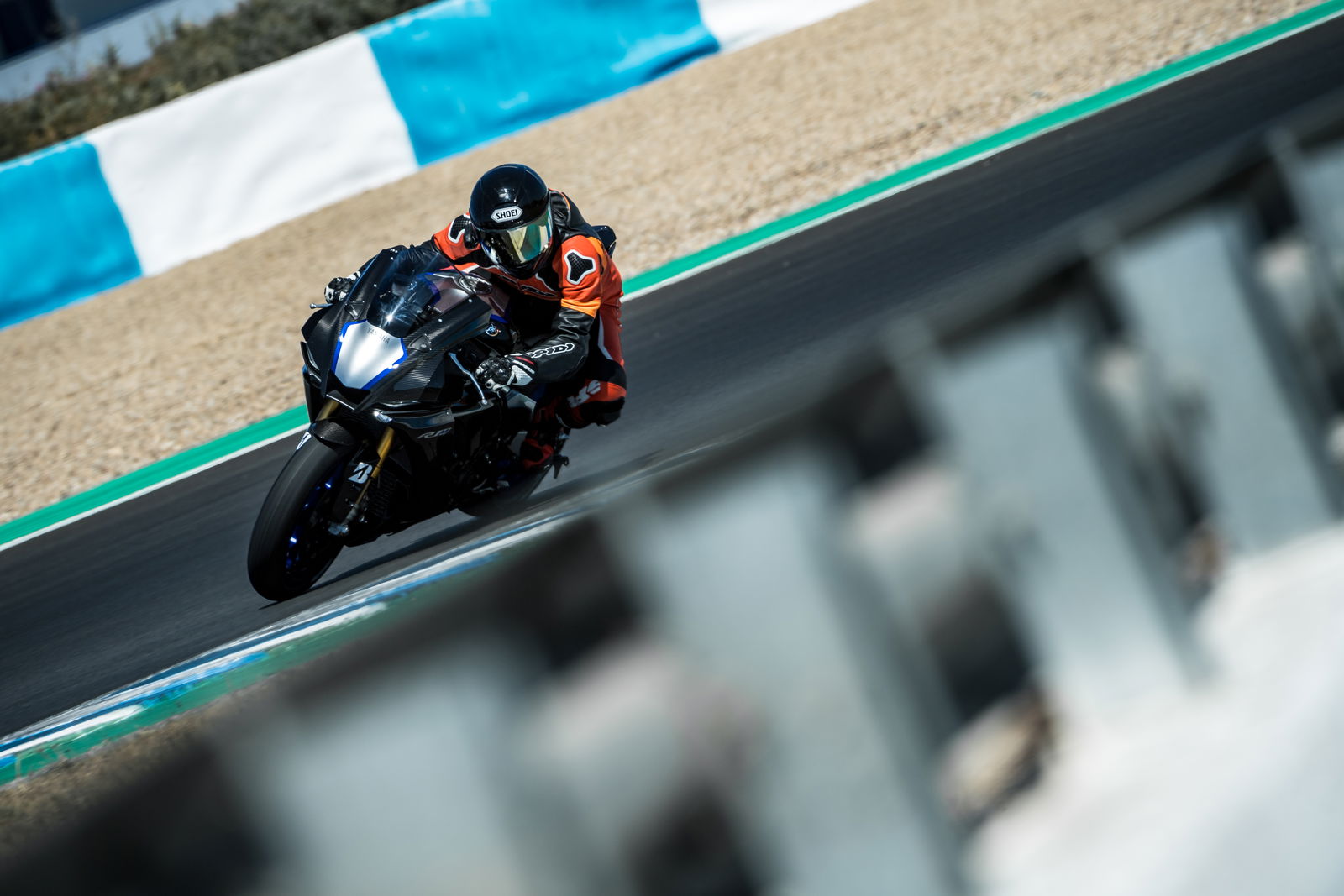
To beat the Euro5 regulations, the R1 and R1M are both fitted with four catalytic converters. Two in the forward part of the exhaust chamber and two at the rear, just below the link pipe.
Out on the blisteringly fast Jerez circuit, the engine’s torque and power delivery are unmistakable, with the four catalysers doing little to mute the MotoGP exhaust note. If anything, the engine feels to pull better in the lower gears than the out-going machine. Other than the improved rideability low-down, most of the other revisions are hard to pinpoint from the seat and are probably more about emissions and noise regs, rather than improving the show for the average rider.
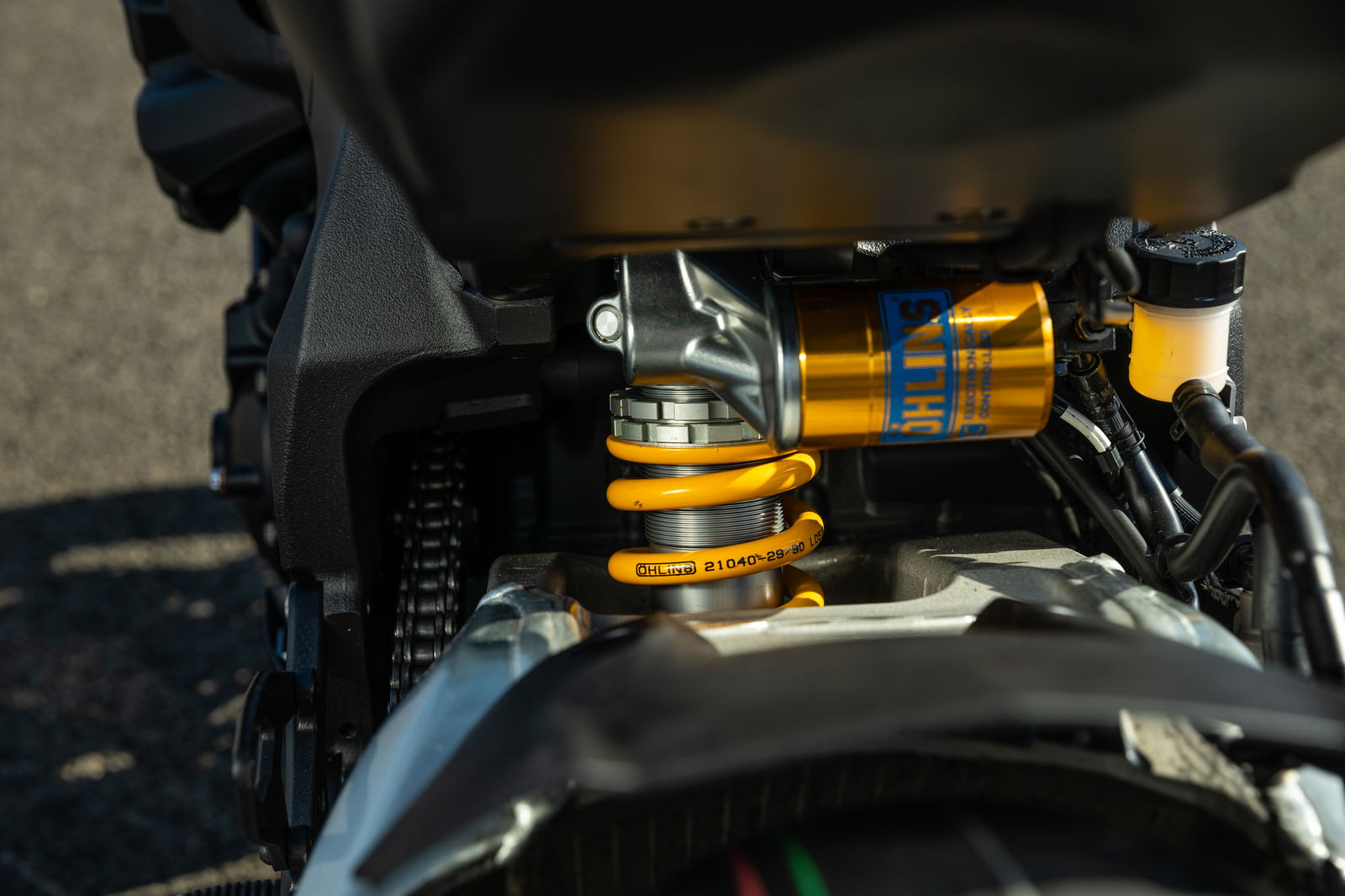
Yamaha R1 2020 suspension
R1:
The 43mm KYB forks have been modified with the hope of improving rider feedback. Damping valves have been redesigned and are arranged in a laminated layout. The 2020 R1 also gets modified steering damper as well as revised settings to the rear shock.
With the morning spent riding the R1, it gave me a chance to acquaint myself with the revised machine and the fast and flowing MotoGP venue. Building up my speed slowly I found the R1 to be a lively bike, constantly shifting and moving about to let you know what is going on beneath you. As my pace grew, I did find that the rebound damping could be overpowered in the fast turns, with even the smoothest release of the front brake causing the front end to rise a tad more than I’d have liked. For those that are track-inclined, some time spent tweaking the settings should dial this out in a couple of sessions.

R1M:
The 2020 R1M gets top-spec Öhlins ERS NPX gas pressurised forks with electronic control. The new pressurised item exerts some pressure back into the fork, helping to reduce the kind of rebound that I found on the standard R1 in the morning sessions. The Öhlins electronic rear-shock has also been given a modified pre-load setting.

For the afternoon we rode just the R1M, which was fitted with Bridgestone Battlax V02 slick tyres, further enhancing the bike’s already rail-like cornering ability. The unwieldy rebound of the morning sessions was completely gone and the Öhlins EC system was now firming up the front under hard braking while reacting to the bumps into turn-6 in the process. With all the electronic intervention – and the slicks – the bike does miss some of the feedback you get from the base model R1, but it is noticeably more planted and stable.
The suspension settings through the TFT dash are the same as before and can be updated and adjusted through the official R1M app.

Yamaha R1 2020 braking
Both versions of the new bike feature the same Sumitomo calipers as the outgoing R1 and R1M. Thankfully the braking system is no longer linked – I found the system a tad off-putting at the Silverstone Masterclass – although the braking feel and longevity are really the only fly in the ointment.

The first couple of laps were fine, although as the pace picked up the brakes seemed to lose some of the bite and feel. With the lever coming back to the bar by the end of the session. For general road riding, you’ll probably never notice but if trackdays are your thing, you’ll probably want to make some changes to pads, lines or even calipers to remedy it.

The ABS on the new bike is an IMU controlled system with 6-axis of measurement thanks for a gyro and g-force sensors. The IMU and ECU talk to each other 125 times per second. The 2020 bike’s brake control system allows you to select one of two ABS modes - BC1 and BC2. BC1 is a fixed level of ABS sensitivity, while BC2 mode has a flexible ABS sensitivity that is dependent upon the machine's lean angle and attitude. In BC2 mode the ABS sensitivity and intervention speed increase as the banking angle gets greater, helping to spot any brake-related slides and react appropriately. The ABS cannot be completely switched off through and could still be felt cutting in on slick tyres in the afternoon. You do have the option of removing the fuse to deactivate the system altogether. But on a bike this advanced, that’s sure to throw up some warning lights on the dash.

Yamaha R1 2020 handling
It’s difficult to measure the two machines against each other, and it’s not really fair to do. The electronic aids and slick on the R1M put that machine in another league to the base model, although it still offers levels of performance and control that will be above the skillset of most riders.
Both bikes are physical machines to haul around a track, rewarding a rider that prefers to grab the bike by the scruff of the neck and push it into corners, steering it on the throttle at the corner exit. The R1M retains that mid-corner stability of the old model, while the slightly unnerving rebound action being the only real issue I could find with the base model R1.
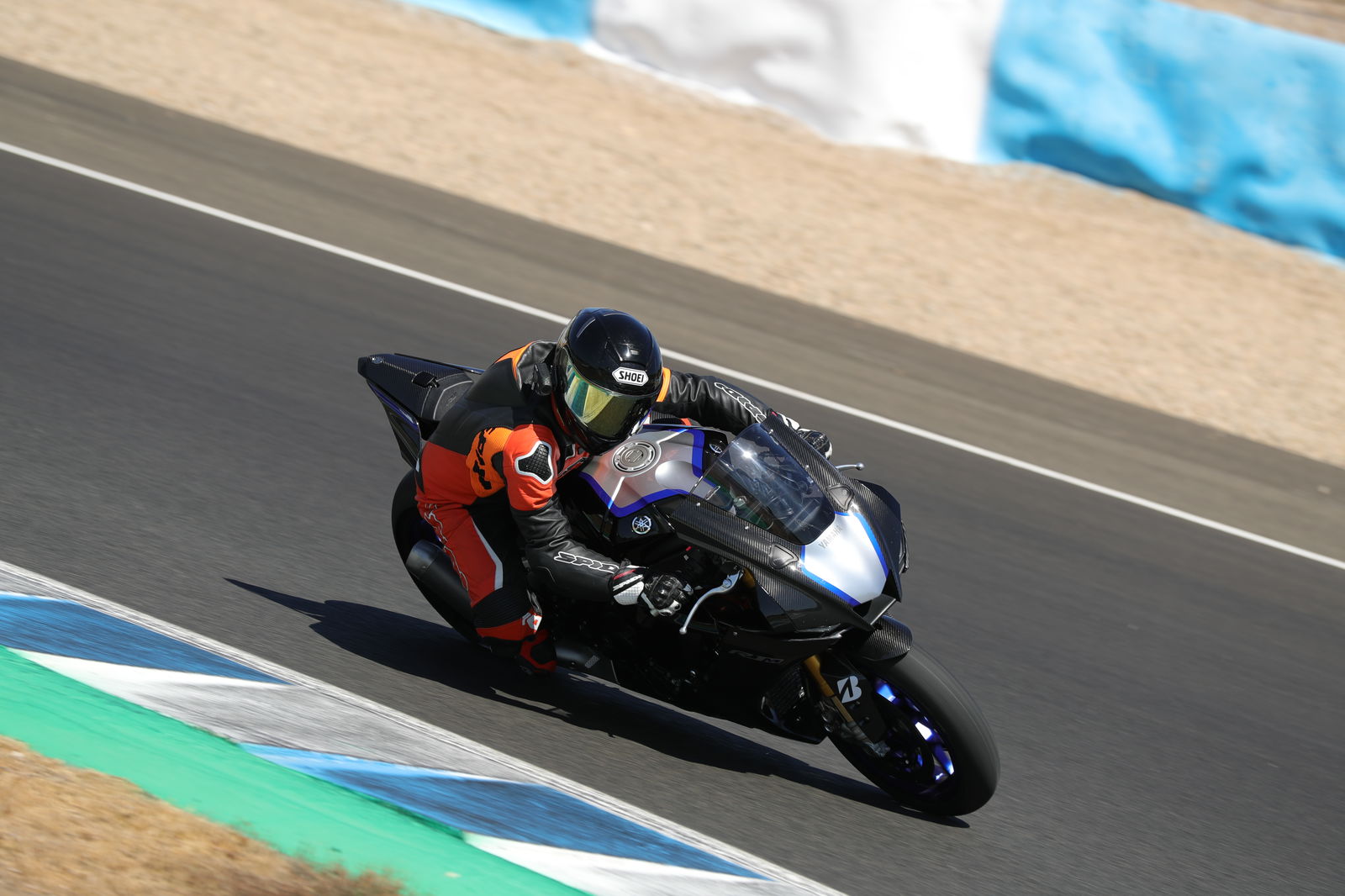
Both bikes now feature integrated top fairing and tank sides which are aimed at increasing aero efficiency. While they may help with that, I did find it a little harder to grip the tank sides with my legs. If you’re looking for a machine to hang off on the track, a set tank grips should be on your wish list.
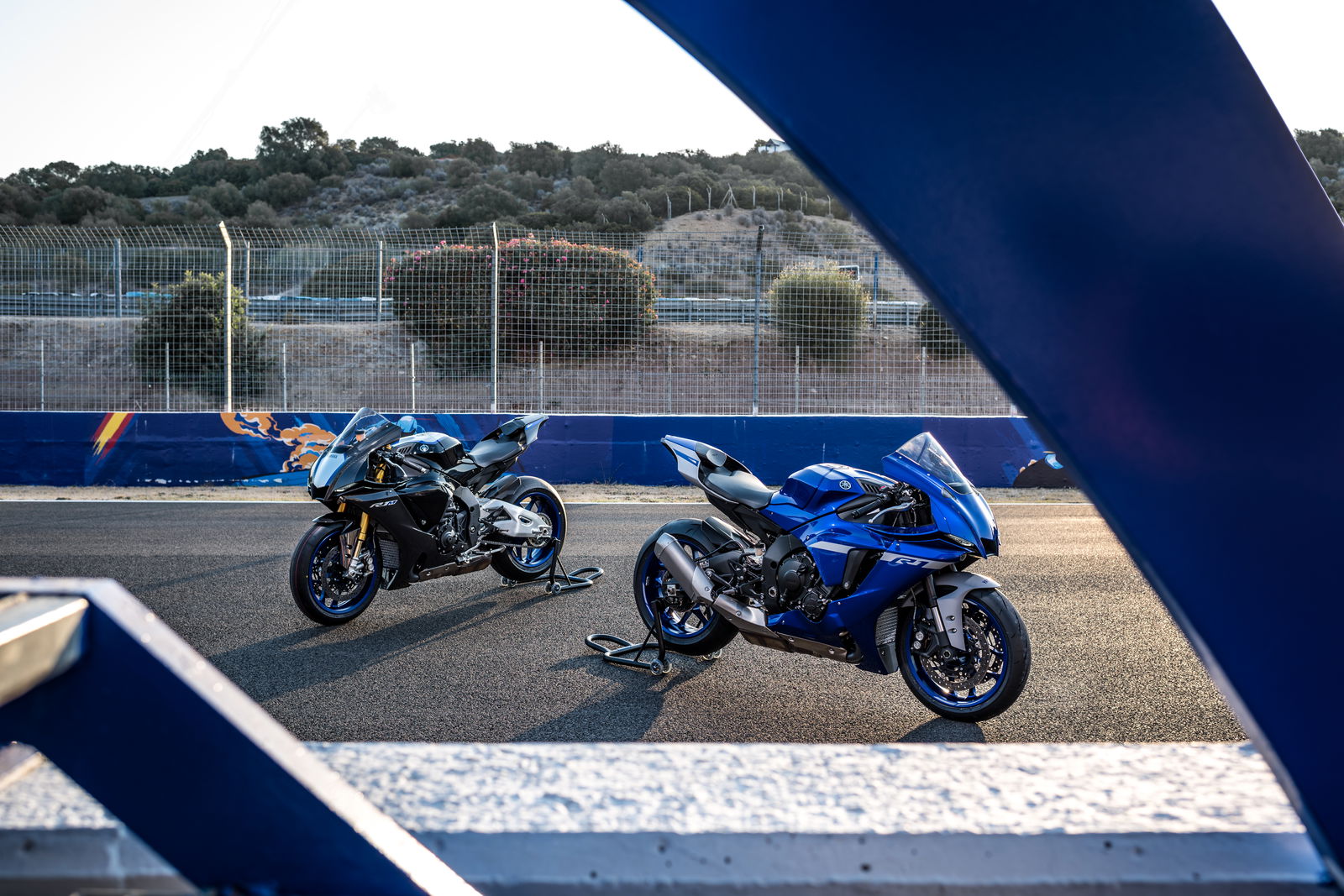
Yamaha R1 2020 equipment
Alongside the cornering ABS and electronic suspension already mentioned, the 2020 versions get new engine braking setting featuring three levels of intervention, launch control that now activates at 9,000rpm. With the addition of multi-level braking control and engine braking control, the dash has been tweaked accordingly. But sadly, it still doesn’t include a fuel gauge – although the fuel warning light is now brighter and was readable even in the 32°C Spanish sunshine.
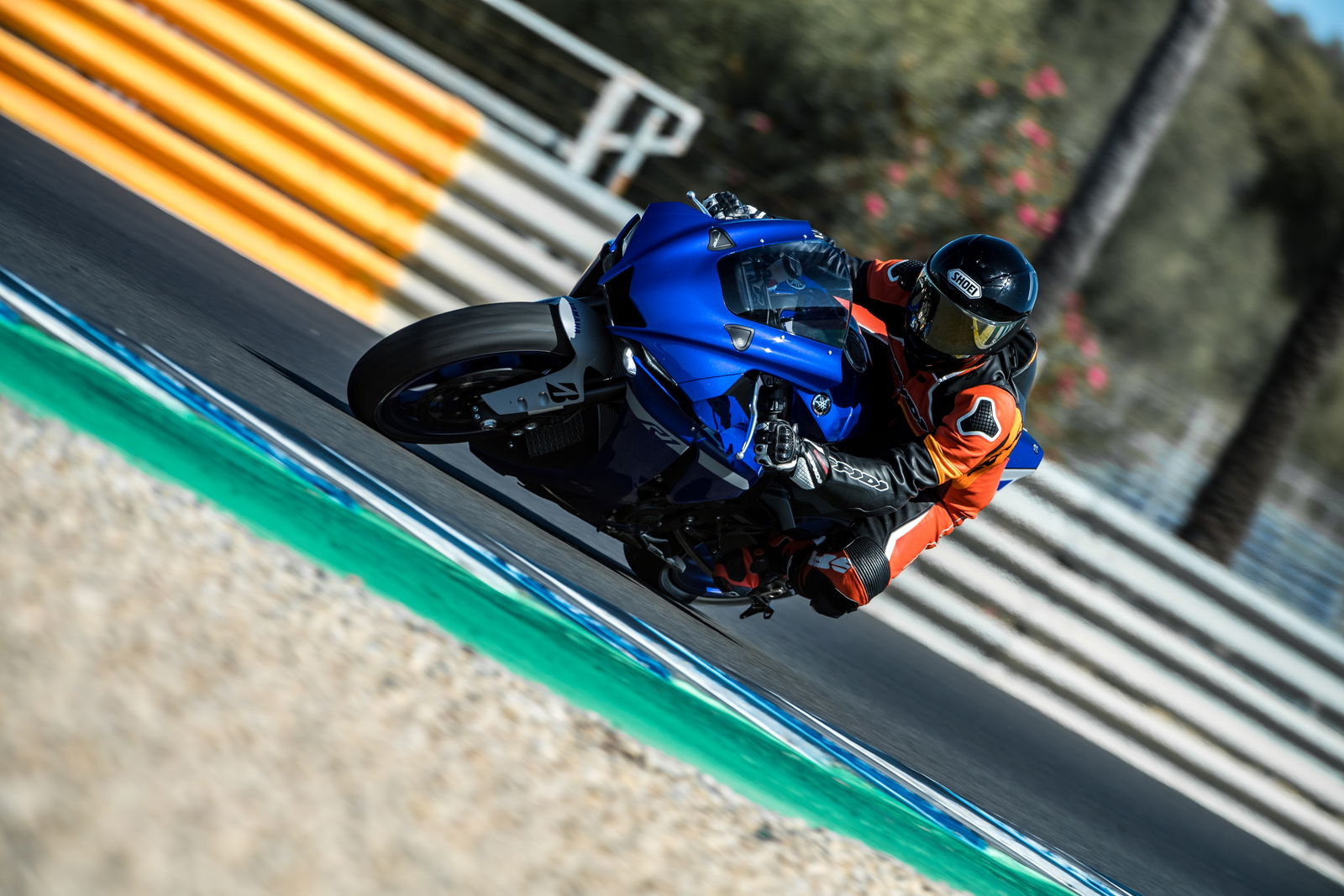
Should you buy the Yamaha R1 2020?
It’d be easy to see the new bikes as a simple act of Euro regulation avoidance, and while that may be true in some respects, the differences between the old and new bikes do warrant some attention from those looking for a trade in on their current sportsbike.
With around 75% of R1 owners taking their bikes on track at least once or twice a year, it’s hardly surprising that the track is the primary focus for the new machine. The rider aids and electronics reaffirm the R1 as one of the most technologically advanced machines in the sector, with a rider interface that, while it isn’t simple, does offer more levels of adjustment than most will know what to do with!
For less experienced riders it’ll compliment your time on road and track, helping you to achieve more corner speed and lean angle in a safer environment. And for the trackday elite, the new engine braking control means a more tailored package can be created at the click of a button.
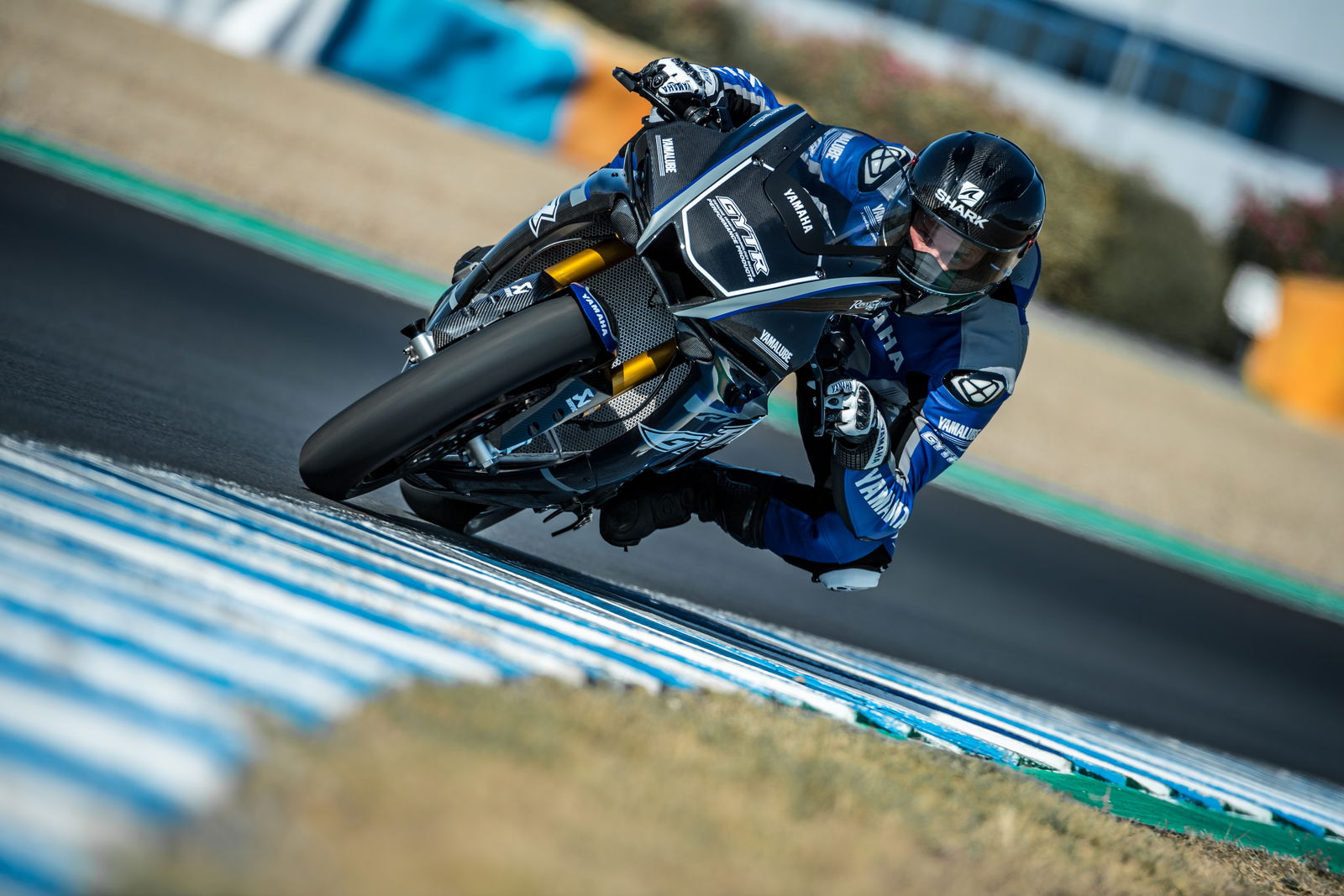
The only real problem with the machine that would need your attention is the front brake. A set of super-sticky pads may help, although I feel that the hardware may need swapping out to achieve a class-leading front stopper. I think the message is clear when you look at the front end of Yamaha’s super-trick track weapon, the YZF-R1M GYTR and its lovely looking (and feeling I’d imagine) Brembo Monobloc set up. Don’t let that put you off getting to a dealership for a test-ride in October though, you will not be disappointed.
Yamaha R1 2020 specs
ENGINE
Engine type | 4-cylinder, liquid cooled, in-line, 4-stroke, DOHC, 4-valve |
Displacement | 998 cc |
Bore x stroke | 79.0 mm x 50.9 mm |
Compression ratio | 13.0 : 1 |
Maximum power | 147.1 kW (200.0 PS) @ 13,500 rpm |
Maximum torque | 113.3 Nm (11.6 kg-m) @ 11,500 rpm |
Lubrication system | Wet sump |
Starter system | Electric |
Clutch type | Wet, multiple-disc |
Fuel delivery | Fuel Injection |
Ignition system | TCI |
Transmission system | Constant mesh, 6-speed |
Final transmission | Chain |
CHASSIS
Frame | Diamond |
Front suspension system | Telescopic fork |
Front travel | 120 mm |
Caster angle | 24.0° |
Trail | 102 mm |
Rear suspension system | Swingarm (link suspension) |
Rear travel | 120 mm |
Front brake | Hydraulic single disc, Ø320 mm |
Rear brake | Hydraulic single disc, Ø220 mm |
Front tyres | 120/70ZR17M/C (58W) Tubeless |
Rear tyre | 190/55ZR17M/C (75W) Tubeless |
DIMENSIONS
Overall length | 2,055 mm |
Overall width | 690 mm |
Overall height | 1,165 mm |
Seat height | 855 mm |
Wheelbase | 1,405 mm |
Min. ground clearance | 130 mm |
Wet weight (including full oil and fuel tank) | 201 kg |
Fuel tank capacity | 17.0 litres |
Oil tank capacity | 4.9 litres |
